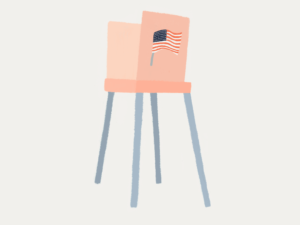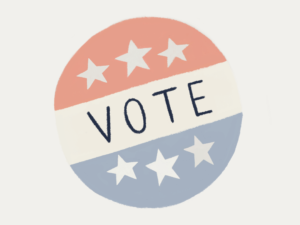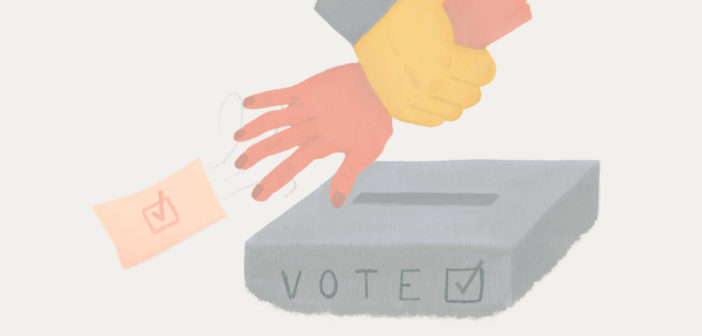In June 2020, during the primary elections, Georgia voters were forced to wait in line at their local polling places for hours. Election authorities cited technical difficulties and missing voting machines as the culprits, according to the New York Times, but the event underscored a broader pattern of racially discriminatory voter suppression in the United States.
“Once Shelby County v. Holder, section 5 of the Voting Rights Act that provided for preclearance— once that was basically invalidated, then we saw this slew of changes in the South that have disproportionate effects on communities of color,” said Associate Professor of Political Science Suzanne Chod. “Rural areas as well but mostly communities of color. And the data are very, very clear on this. There’s really no way to talk about it unless we talk about the strategy of disenfranchising certain voters.”
Following this Supreme Court decision, according to the Center for American Progress (CAP) many Southern state governments made swift and substantial changes that affected predominantly Black and brown communities.
For example, North Carolina promptly ushered in a law that required all voters to show proof of ID at the polls. In response, CAP reported, the NAACP filed suit that argued the law allowed “only those types of photo ID disproportionately held by whites and excluded those disproportionately held by African Americans,” citing state employee cards and public assistance IDs as examples of prohibited forms of identification.
Other states continue to disenfranchise voters by imposing discriminatory restrictions and closing local polling places.
“I don’t think people realize that voting isn’t always easy for some people,” said Haven Denson, ‘21, who participated in voter engagement week on campus through the Center for Social Impact this past September. “It’s a privilege, not a right, even though it should be a right.”

Graphic by Jessica Sciabica.
The familiar “not voting is a vote for the other side” is a particularly cutting fallacy often used to shame eligible voters into fulfilling their “civic duty.” But not all nonvoters are consciously abstaining.
“We’re an individualistic nation, so we think first about personal responsibility, accountability and the individual and we think next about community, institutions and systems,” Chod said.
A 2017 Pew Research analysis of Census Bureau data found that 4% of registered voters didn’t cast their ballot due to “registration problems.” And according to the New York Times in 2016, 10% of Florida residents over the age of 18 can’t vote due to prior felony convictions. Additionally, the Times reported, the vast racial disparities in court sentencing largely impact the voting rights of Black and Hispanic people.
In July 2020, according to CBS, LeBron James’ 1919 nonprofit organization for voting rights, called More Than A Vote donated $100,000 to pay the fines of formerly incarcerated Floridians, allowing many to vote in the upcoming November election and beyond. Similarly, in September 2020, former New York City mayor Michael Bloomberg raised and donated $16 million, which helped 32,000 Florida residents reclaim their right to vote years after serving time behind bars, Salon reported.
“During Jim Crow and Reconstruction, there were taxes and literacy tests, and since we got rid of that, we don’t like to admit that we still have tactics in place that suppress voters,” said Rachel Maida, ‘21, a political science major at NCC.
Although much of President Trump’s reelection campaign has focused heavily on rampant “voter fraud,” according to AP News, leaders like Stacey Abrams, founder of Fair Fight, which advocates for fair elections, and former Georgia state representative, tell NPR that this is nothing more than a harmful myth which disillusions voters and convinces them their voices don’t matter.
Abrams cited The Heritage Foundation’s database as an example, which, out of 625 million votes cast, has only recorded a little under 1,300 proven cases of voter fraud.
“We know for a fact that mail-in balloting does not give a partisan advantage to Democrats or Republicans,” Chod said. “It advantages voters who vote regularly already because it gives them more access. It advantages older voters. It disadvantages voters of color and those in racial and ethnic minority communities because their ballots tend to get rejected at a much higher rate.”
The Washington Post recently analyzed mail-in ballots cast in Georgia during the 2018 midterm elections and found that a disproportionate number of ballots submitted by younger voters, first-time voters and people of color were rejected. It’s unclear why this happened. However, in an election that expects 35% of registered voters to vote by mail—a drastic drop from the 70% projected by experts in the spring, according to NPR— these statistics are alarming.
Chod firmly believes the “voter fraud” narrative is incredibly damaging.
“If we discredit the system, if we delegitimize our electoral institutions, if we delegitimize the postal service, if we talk about ballots being in creeks, which never happened—all it does is confuse voters and make them feel like the system is rigged, which is something the president wants,” Chod said. “The effect of that is not a partisan effect. It is an effect on our democracy.”

Graphic by Jessica Sciabica.
These patterns of delays, closures, ballot rejections and restrictive voting laws have a cumulative impact on communities and future elections.
Pew’s analysis of Census Bureau data in 2017 also found that 15% of registered voters sat the 2016 election out because they were “not interested” or felt “that their vote wouldn’t make a difference.”
Denson described this as a “vicious cycle.”
“Not only are people potentially prevented from voting in that election due to them not being able to take off work or find childcare or so many different things, but then, in the future, they realize how difficult it’s going to be and say, ‘What’s the point?’” Denson said.
Denson believes this isn’t an individual issue but rather evidence that leaders aren’t doing nearly enough to support their constituents. Maida agrees.
“We see that with not fighting for a national election day where people can take off work,” Maida said. “Until something like that happens and we get rid of voter ID laws and things like that, I think (the system) is just going to continue to allow voter suppression.”
But the fight isn’t over. Chod is encouraged by those on the frontlines, like Abrams, who are actively seeking solutions.
“What she is doing, and others who are not necessarily working in government but those who work in advocacy, are lobbying members of government to bring awareness and social activism to this issue,” Chod said. “If the government isn’t going to do anything about it, and in fact, if state governments are going to continually, purposefully suppress votes, then we have to start a grassroots movement or reinvigorate a grassroots movement. That’s the only way we’re going to make any progress.”

